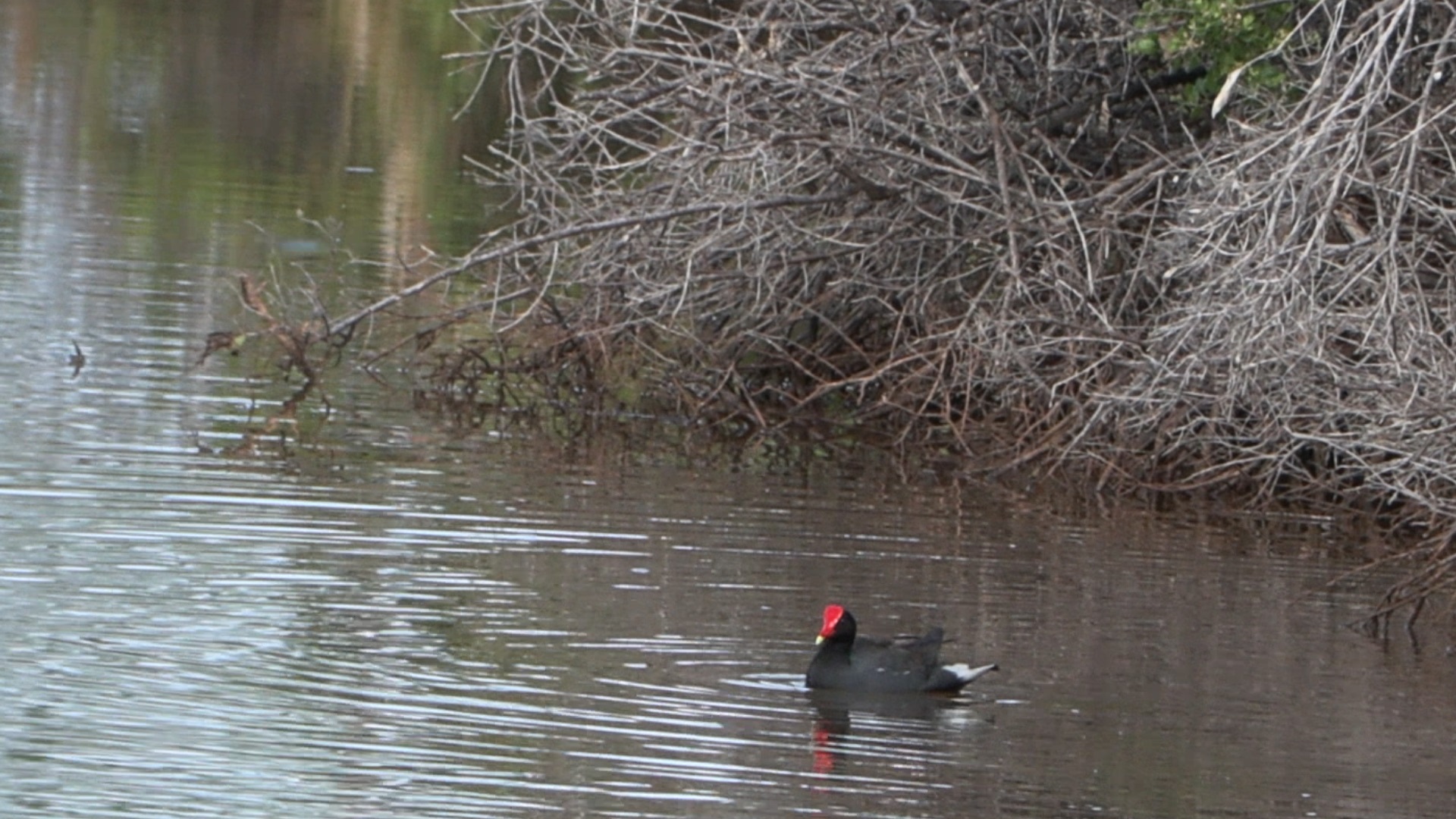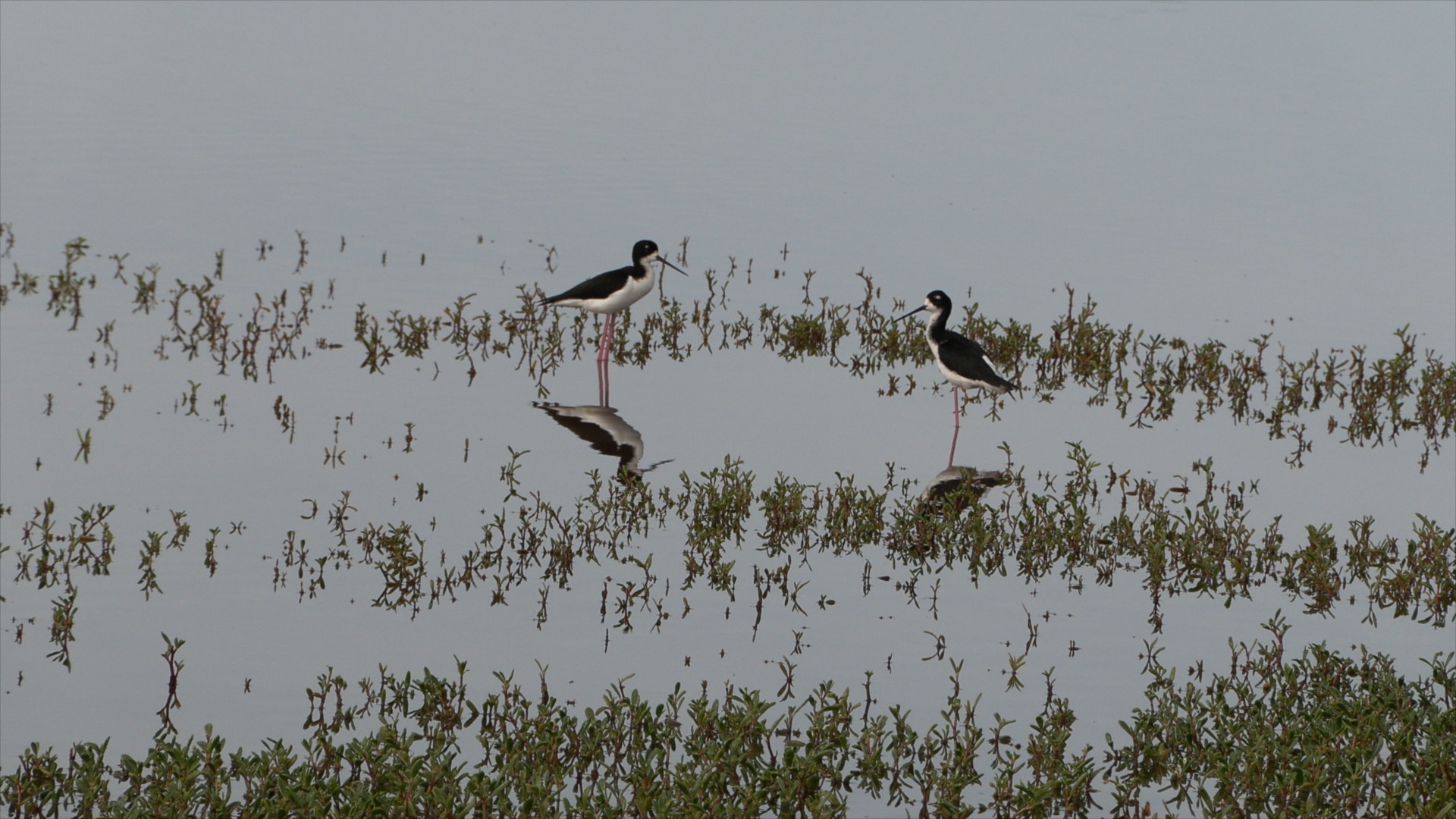In the wide-open expanse of West Kauai, a quiet revolution is taking flight.
Once drained for sugarcane, the Mana Plain – at one time the largest wetland in the Hawaiian Islands – is being reborn as a sanctuary for some of Hawaii’s rarest birds. Thanks to decades of restoration work by the Department of Land and Natural Resources (DLNR) Division of Forestry and Wildlife (DOFAW), this 150-acre expanse of wetlands is now one of the most vibrant ecological success stories on the island.
And the birds have noticed…
DOFAW biologist Jason Vercelli says the numbers of native waterbirds and migratory shore birds at the sanctuary is the most he has ever seen in his 18 years of working in the wetlands.

Hawaiian Gallinule Bird
The sanctuary is currently home to four endangered native waterbirds: the Hawaiian coot, Hawaiian gallinule, Hawaiian stilt, and the Koloa duck. During migration season, these residents share their space with waves of shorebirds from the mainland – some of which will fly for four days straight without stopping to rest, as they can’t land in the ocean.
“I’m not sure, on their return, how they find this little rock out here in the middle of the Pacific,” Vercelli muses.
A Sanctuary Restored
The story of the Mana Plain is one of both loss and reclamation. In the early 20th century, this vast wetland was drained for agriculture, devastating the habitat for Hawaii’s waterbirds. In the 1990s, the state began restoring a portion of the area, beginning with the Kawaiele Bird Sanctuary. Since then, restoration has expanded to cover 100 acres, with another 50-acre parcel soon to be added – all to be managed as a single project.
What’s grown out of that effort is more than just a haven for birds. It’s become a sanctuary for people too.
From bird watchers and nature photographers to school groups and volunteers, the area is drawing an ever-growing community of people looking to connect with nature – and with each other.
“It’s just a really peaceful place,” says Vercelli. “especially in the mornings or at sunset. It’s really a nice place to be at sunset,” he adds.

Hawaiian Stilt Bird
From Mauka to Makai
The benefits of the wetland stretch far beyond the sanctuary boundaries. Acting as a natural filtration system, the wetland captures sediment before it can reach Kauai’s coral reefs – improving water quality and helping to protect the health of nearshore ecosystems.
Looking Ahead
Future plans for the sanctuary include a dedicated visitor’s center that would be made possible through grant funding.
Even after nearly two decades, Vercelli’s sense of wonder hasn’t dimmed.
“I can have a hard day,” he says, “and then you come out here and see something, a new bird, or see chicks, and just seeing this and getting feedback from the people and just knowing that I was helpful in developing this is definitely a pride factor.”
In the hush of the wetlands, under the long light of sunset, with wings overhead and chicks in the reeds, the Mana Plain is once again alive with flight. And thanks to the care of those like Vercelli – and the quiet, determined work of nature herself – that story is only just beginning.
The Kawaiele Waterbird Sanctuary, the centerpiece of the bird sanctuary, can be found on the island’s west side, past Kekaha and across from the PMRF military base (Google Maps).
SOURCE: Division of Forestry and Wildlife: “Kauai Sanctuary is Hugely Popular With Native and Transpacific Water Birds, April 23, 2025.


